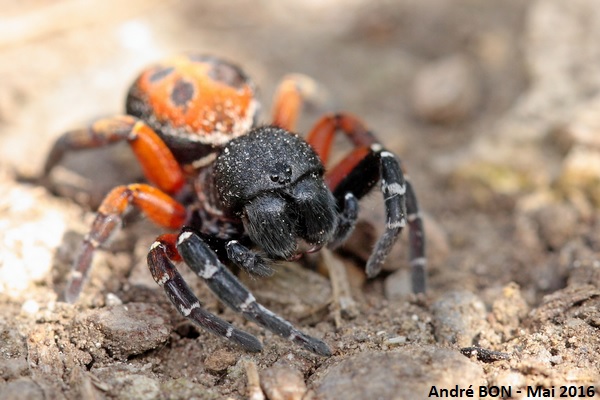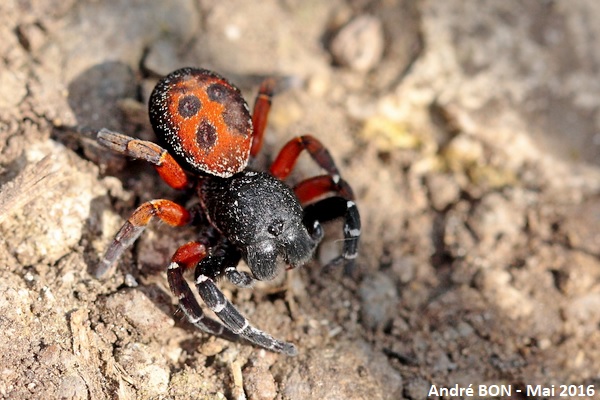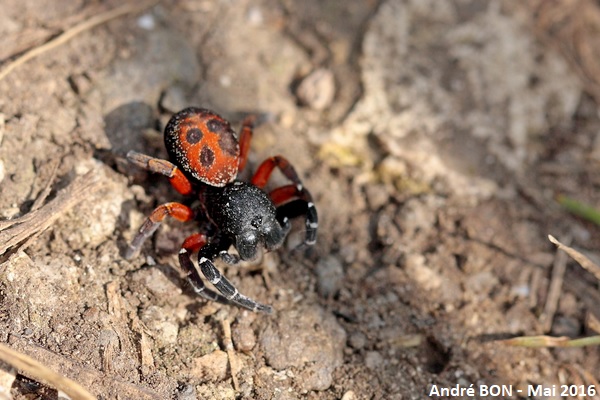


| Eresus moravicus (Rezác, 2008) |



|
|
Scientific name: Eresus moravicus (Rezác, 2008) Common name: French name: Order: Araneae Family: Eresidae Size: 10 to 20 mm for females; 8 to 11 mm for males. Biotope: Sunny habitats, steppes, where it is easy to dig burrows in the soil (sand, gravels, rocks, etc.) Web: Females dig a 10 cm deep burrow. It is lined with silk which extends outside in a horizontal sheet or a tunnel often sheltered by low vegetation. Observation period: April to June. Geographic area: Austria, Hungary, the Czech Republic, Slovakia, Albania, Greece. |
Eresus moravicus, like all the other members of the Eresus genus, shows an important sexual dimorphism both in size and in colour. Males have a black cephalothorax with diffuse white hairs. The abdomen is bright red with four black spots often circled in white. The two fore pairs of legs are brown with black hairs and white rings at the joint of the segments. Femurs and patellas II are reddish. The two hind pairs of legs are orange with red hairs along almost their entire length. Females are black with a large rufous yellow patch on the forehead and at the base of the chelicerae. Males walk out in search of females between April and June. Male Eresus kollari have at least the last two segments of pairs of legs III and IV black with grey hairs. They are observed from July to October. There is also a possible confusion with Eresus hermani found in Hungary and the Czech Republic. This species is active earlier in the year, in early spring. I found a key that distinguishes Eresus moravicus by the presence of a red zone at the back of the cephalothorax that Eresus hermani does not show. Male Eresus sandaliatus do not have any red on their legs. Females of all these other species do not have any rufous yellow forehead patch. The young spiders which are born in summer are first fed by the female which dies soon after and is devoured by her offspring. |
| [To know more about the Eresus moravicus] [Next picture] [Top] |

|
The two hind pair of legs showing red colour and the date of this observation seem to lead to the Eresus moravicus species. However, the lack of visibility of the last two segments of the hind legs and their dark appearance does not allow to completely rule out Eresus kollari (unless the observation date is enough to discard this species). So I just list this one as Eresus sp. |
| [To know more about the Eresus moravicus] [Next picture] [Previous picture] [Top] |

|
This other view of the same specimen shows the lack of a red area at the back of the cephalothorax. So we may have Eresus hermani here (unless the observation date is enough to discard this species). |
| [To know more about the Eresus moravicus] [Previous picture] [Top] |

|
I did not vary my shots enough and I regret not having taken a good picture from above which could have helped me to identify the species. |